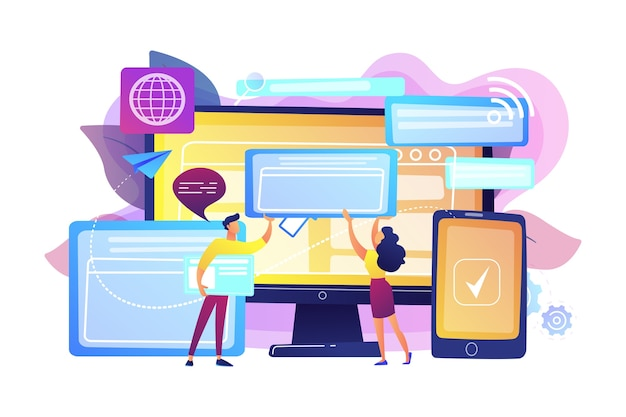Web Accessibility: Creating Inclusive Digital Experiences for All
In today's digital landscape, web
In today’s digital landscape, web accessibility has become paramount in ensuring inclusive digital experiences for all users. With the rapid growth of the internet, it is essential to design websites that cater to individuals with diverse abilities and disabilities. Web accessibility focuses on creating digital environments that are accessible and navigable by everyone, regardless of their visual, auditory, motor, or cognitive impairments. By incorporating accessible design techniques, web designers can break down barriers and provide equal access to information and services. In this blog, we will explore the importance of web accessibility and delve into practical strategies for implementing accessible design techniques to create inclusive digital experiences for all.

What is Accessibility in Designing Websites?
Web accessibility involves designing and developing websites to accommodate the needs of diverse users, including those with disabilities. It focuses on removing barriers that may hinder access to information and services, ensuring an inclusive user experience for all. Accessibility encompasses various aspects, including visual, auditory, motor, and cognitive impairments. By adhering to accessibility principles and guidelines, designers can create websites that are perceivable, operable, understandable, and robust, catering to a broad range of users.
The Importance of Web Accessibility
Web accessibility is not only a moral and ethical responsibility but also a legal requirement in many countries. It ensures that individuals with disabilities can access vital information, engage with online services, and participate fully in the digital world. By neglecting accessibility, websites can unintentionally exclude a significant portion of the population, leading to discrimination and unequal opportunities. Moreover, an accessible website benefits everyone, including older adults, individuals with temporary impairments, and those with limited internet connectivity. Prioritizing accessibility enhances usability, increases audience reach, and demonstrates social responsibility.
Implementing Accessible Design Techniques
Perceivable Content
-
- Provide alternative text (alt text) for images, enabling screen readers to describe them to visually impaired users.
-
- Include captions and transcripts for multimedia content, ensuring accessibility for individuals with hearing impairments.
-
- Design for proper color contrast between text and background to assist users with low vision.
Operable Interface
-
- Ensure keyboard accessibility, allowing users to navigate and interact with the website using only the keyboard.
-
- Provide visible focus indicators to highlight interactive elements, aiding users who rely on keyboard navigation.
Understandable Layout and Content
-
- Structure content using headings (H1, H2, etc.) to create a clear hierarchy and facilitate navigation for screen reader users.
-
- Use plain and concise language, avoiding jargon and complex sentence structures to enhance understanding.
-
- Provide clear instructions and error messages for form inputs, guiding users throughout the process.
Robustness
-
- Build websites using web standards and semantic HTML to ensure compatibility with different browsers and assistive technologies.
-
- Utilize responsive web design to ensure that websites adapt seamlessly to various devices and screen sizes.
Testing and Evaluation
To ensure the effectiveness of accessible design techniques, thorough testing and evaluation are essential:
-
- Utilize automated accessibility testing tools to identify common issues and errors.
-
- Conduct manual testing with assistive technologies, such as screen readers, to experience the website as users with disabilities would.
-
- Seek feedback from individuals with disabilities and engage them in user testing to gain valuable insights and perspectives.
-
- Continuously iterate and improve the website based on testing results and user feedback, ensuring ongoing accessibility enhancements.
In an increasingly interconnected world, web accessibility emerges as a key factor in creating inclusive digital experiences for individuals of all abilities. By prioritizing accessible design techniques, web designers can bridge the gap and ensure equal access to information and services. Embracing web accessibility not only aligns with legal requirements but also reflects ethical responsibility and social inclusivity. Let us strive to break down barriers, foster inclusivity, and create digital experiences that empower and engage all users. Together, we can build a digital landscape that is truly accessible and enriching for everyone, irrespective of their abilities or disabilities.
